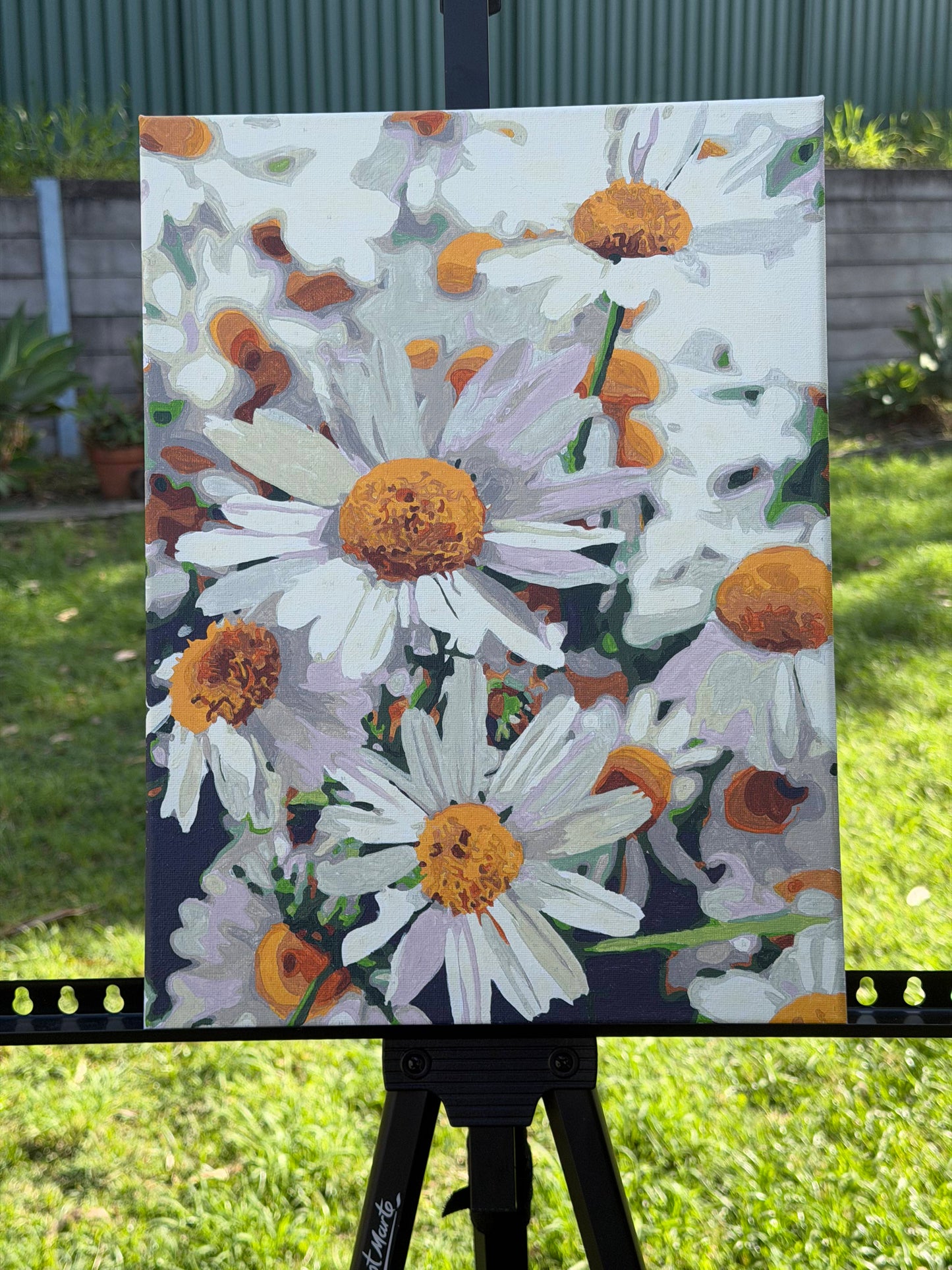Whether you're a beginner or advanced painter, we've all been known to underestimate the difficulty of a paint by numbers. At the end of the day they're just a coloring in using paint instead of colored pencils, right? Whilst you're not wrong in making that statement, as they do share a lot of similarities to coloring ins, there are also lots of ways they can go wrong. One of the main mistakes with paint by numbers is accidentally painting over the line and into another colors space. Your whole painting could be ruined from that one lapse in concentration. So what can you do if you accidentally paint outside the lines with one color? It's not like you can exactly rub the mistake out like you can with a coloring in. Luckily for you we're going to give you some tips and tricks on how to blend acrylic paint on canvas. So, next time you paint outside the lines you'll not only be able to fix it, you'll also be able to turn your painting into a masterpiece!
1. Wet on Wet Blending (Horizontal)
This technique is one of the most common acrylic paint blending techniques and many artists go to technique when it comes to painting skies, sunsets or filling entire backgrounds. Note you need to work quickly with this technique.
- Start by painting your first color in large strokes left to right along the top of the area you want to paint. How far you down the canvas you go with this color depends on how many colors you are blending, but keep colors even. For example, if you're blending 3 colors then go a third of the way down the area with your first color
- Next, without rinsing your brush, you want to dip it into your next color and begin painting left to right below the color your just painted. As you paint this next color you want to slowly paint up towards to the color above and gently blend the colors. Make sure you continue using left to right horizontal strokes and you'll also most likely need to stroke over it multiple times until it blends together well.
- Next if you're blending to a color that is a lot lighter it's best to again dip you brush into the lighter color without rinsing it and repeat what you did to blend the previous two colors.
- To finish off your blending you want to rinse off your brush, dip it into your final color and again blend the remaining color into color above.
2. Wet on Wet Blending (Circular)
This is another common technique used when it comes to blending acrylic paints to make a background. With this technique you use your light color in the middle and blend out to your darker colors, except this time instead of horizontal strokes, this technique uses circular strokes.
- To start this technique you want to begin by painting a medium size circle with your lightest color in the area you're wanting to paint.
- Next, keeping your lightest color on your brush, you want to lightly dip your brush into the next lightest color and mix then together on your palette. Apply this new color in a circular motion around your circle in middle.
- Next grab some of your lightest color again (not too much) and gently brush over the area where your two colors transition. You will most likely need to brush over this area multiple times for best blending results.
- Finally grab some more of the darker color you mixed with your lightest earlier and again apply it in a circular motion around your last circle. Make sure to work in fast circular motions and keep applying more of your darker color to your brush as you work your way outwards.
3. Wet on Dry Blending
This is also a great blending technique used by many artists as it gives you a bit more time to think about what you're doing as you don't have to rush as much.
- Begin by painting your darkest color as your base coat over the area you're wishing to paint. Let this base coat dry
- Next, after letting the base coat dry, get your lightest color (make sure to start with a decent amount) and begin painting along one edge of your darker color in order to make a solid line of the lighter color along the edge.
- Next, without adding more paint to your brush, start to paint towards the middle of the base coat ensuring your using broad brush strokes. As you make your way towards the middle you'll slowly end up with less and less paint on your brush.
- Finally keep blending to the other edge until you're happy with the result.
Will this work for my mistake?
Even though learning to blend acrylic paint is super helpful in many scenarios when completing your paint by number kit, not all mistakes will be fixed by implementing these techniques. However, at least being aware of these techniques you can keep them in mind and also potentially change the way you go about your paint by numbers. For example, if you didn't already, you might decide to start with your darkest color first and work your way to your lightest colors from now on. This could give your the chance to attempt wet on dry blending if you were to make a mistake saving your masterpiece from being thrown away!



















